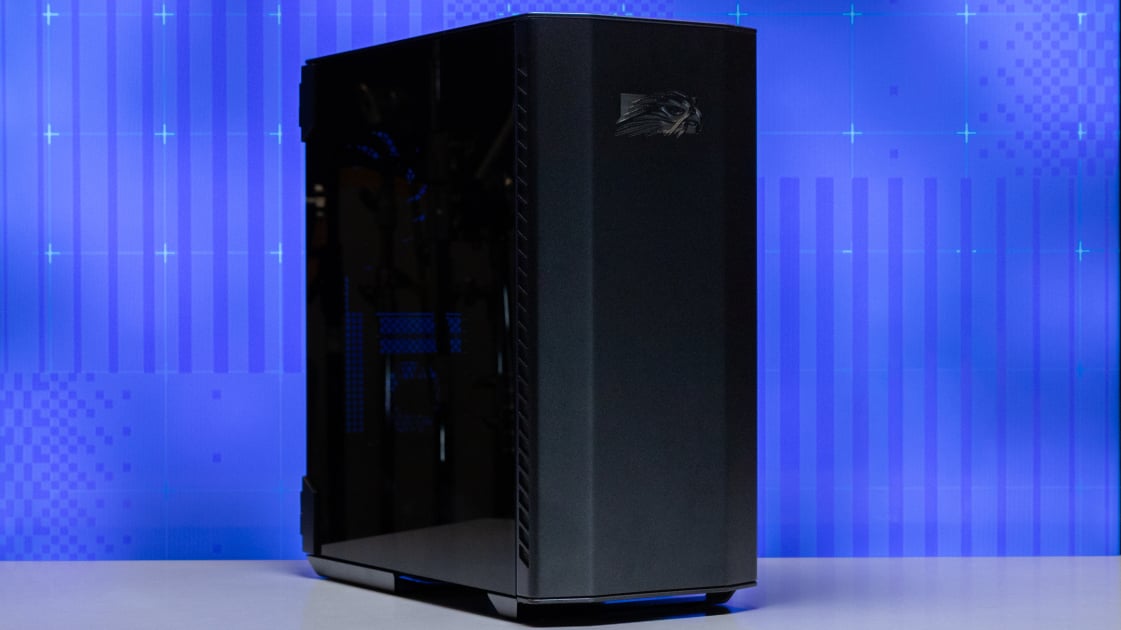Falcon prides itself on designing and manufacturing its cases. Built from thick aluminum, the 19-by-8.8-by-17-inch Talon is a testament to that ethos. It shows off tank-like solidity, flawless machining, and a precise fit that speaks to Falcon’s attention to detail.
Tinted tempered-glass panels provide a shadowy view of the interior. While the system has no RGB lighting—this workstation is all about function—Falcon tells us that RGB support is coming to the motherboards in Threadripper HEDT models. For a more industrial aesthetic, Falcon also sells solid aluminum side panels (see our previous review for visuals), or you can opt for both and swap them as desired.

(Credit: Joseph Maldonado)
The top panel’s front I/O includes two USB 3.2 Type-A ports, one USB 3.2 Type-C port, and a 3.5mm audio jack. The power button has an appropriately authoritative feel.

(Credit: Joseph Maldonado)
Around back, connectivity is generous: two USB4 ports, seven USB-A connections (six at 10Gbps, one legacy 2.0), and dual audio jacks. Networking is enterprise-grade, with two 10Gbps Ethernet ports. The BMC adds its own VGA output and dedicated Ethernet jack for remote management. BIOS flashback and clear CMOS buttons are thoughtful inclusions for power users. As for display output, the RTX Pro 6000 delivers four DisplayPort connectors, as expected.

(Credit: Joseph Maldonado)
The Talon’s side panels silently swing rearward for seamless interior access. The main compartment is meticulously arranged, dominated by the austere Asus workstation board. Eight DIMM slots flank the massive sTR5 socket CPU waterblock, linked with two hoses to the front-mounted 280mm radiator. The Nvidia RTX Pro 6000 sits discreetly below, its subdued design belying its status as the most powerful professional GPU available, with aftermarket pricing around $11,000.
Opening the opposite panel reveals the Seasonic modular power supply, where Falcon’s immaculate custom cabling underscores its build quality. Two 2.5-inch drives can be mounted on the motherboard tray. The Talon’s only mark against it is that its case doesn’t permit greater storage expansion via flexbays, which some competitors provide.
The Talon is impressively quiet. The fan curves are well-behaved, not surging or spiking for briefly CPU-intensive applications, even though the unit generates substantial heat (easily enough to warm a small room under benchmark load).
This article was published by WTVG on 2025-10-21 07:00:00
View Original Post



